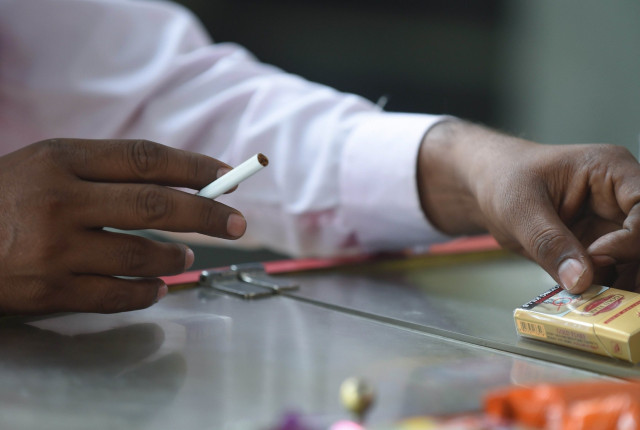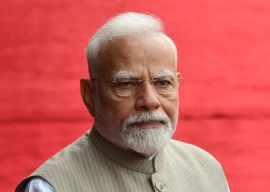
India, with a population of 1.2 billion, would have the world's highest minimum legal age for buying cigarettes if plans to increase the limit from 18 to 25 were implemented, according to campaigners.
The plans, proposed by an expert panel, were announced by health minister J P Nadda in Parliament on Tuesday and will need final approval by Prime Minister Narendra Modi's Cabinet as well as Parliament before becoming law.
"This is a very welcome move by the government," Binoy Mathew, spokesman for the non-profit Voluntary Health Association of India, told AFP.
"It's going to act as a huge deterrent, especially for students and youngsters."
Around 900,000 people die of tobacco-related illnesses in India each year, the second-highest number after China, and experts predict that could rise to 1.5 million by the end of the decade.
An estimated 70 per cent of cigarettes sold in India are unpackaged, equating to more than 100 billion sticks in 2012, according to market researcher Euromonitor.
Campaigners say the practice of selling single cigarettes at street stalls has pushed up smoking rates, particularly among teenagers and the poor who cannot afford a full packet.
"These people were easily buying single sticks for 16 to 24 cents, but now they will have to shell out $3 for the full pack, which will not be so easy," said Mathew.
Indians consume tobacco in several forms apart from cigarettes, including "gutka" -- a cheap, mass-produced mix of tobacco, crushed areca nut and other ingredients -- and hand-rolled sticks called 'beedis'.
New Delhi announced last month that tobacco companies would have to stamp health warnings across 85 per cent of the surface of cigarette packets from next year.
Monica Arora, from the Public Health Foundation of India, applauded the jump in the minimum age which she said would be the highest anywhere in the world. In most countries it ranged from 16 to 21.
"Research shows that if someone hasn't started smoking at 21, chances of that person becoming a tobacco user drops drastically," said Arora, director of the foundation's tobacco control initiatives.
"Ninety per cent of youth take to smoking before the age of 18 and they experiment by buying single cigarettes.
"Now they will have to buy full packs which will have pictorial warnings and they would get reminded of the dangers every time they reach out for a smoke."
The proposed ban would badly affect companies such as ITC, India's largest cigarette maker, which earned $164 million from sales in 2013-14.
Arora acknowledged that enforcement of any law would be difficult and would need a community-led approach. Cigarettes are sold at small stands on most street corners.
"If you sensitise the retailers and tell them about what is illegal and that there are strict penalties, they would not want to violate the laws," she said.
Researchers say inadequate public awareness of smoking risks, coupled with aggressive tobacco marketing, has left Asian nations with some of the world's highest smoking rates, at a time when sustained campaigns have cut rates in the US, Australia and parts of Europe.



















COMMENTS
Comments are moderated and generally will be posted if they are on-topic and not abusive.
For more information, please see our Comments FAQ